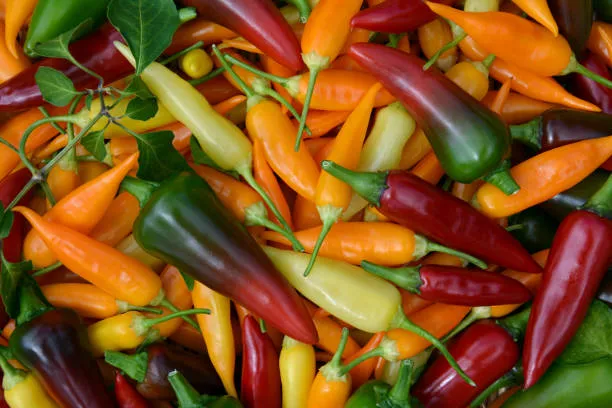What is Habanero Pepper?
The maximum length of a habanero pepper is 2 inches.
They are native to South America and have been cultivated for over six thousand years.
The claim is that they are the oldest known to man.
The name of the peppers is derived from the Spanish word for “from Havana”, where they were originally exported.
Their heat index is around 150,000 Scoville units, which is hotter than a jalapeno pepper.
The degree of spiciness depends on the amount of capsaicinoids contained in the pepper.
The habanero chili is green in color.
It can be orange, red, or yellow depending on how it has been cultivated and how mature it is.
Habanero peppers can turn orange-red when ripe.
The taste of the Habanero is different due to its high content of citric acid.
5 Best Substitutes of Habanero Pepper
We can help you out if you aren’t a fan of spicy foods.
Depending on your taste and intended outcome, there are many habanero pepper substitute options.
If you’re looking for an alternative ingredient with a similarly powerful kick, the following five alternatives should be able to satisfy you.
1 – Scotch Bonnet Peppers
If you need a similar kick, the scotch bonnet is a good pepper to try.
The Scotch bonnets measure between 100,000 to 350,000 Scoville units.
habaneros are similar to them but are shorter and rounder.
The habanero chili’s skin is thinner than the pepper’s.
Many Caribbean, African, and Asian cuisines use this pepper.
Adding the scotch bonnet to a curry or stew will give it more flavor.
It is important that you do not touch your eyes after handling this pepper because it contains a ton of capsaicin, which makes it difficult to handle.
The hot pepper can cause a burning sensation in some people.
We recommend that you gradually add this ingredient to your dish.
2 – Serrano Peppers
The Serrano Pepper is 2 inches shorter than habanero and Scotch bonnet peppers.
It packs more heat than the other peppers.
This chili contains between 5000 and 15000 Scoville units.
The heat of this chili is dependent on where it is grown and when it is harvested.
The serrano pepper is green in color and matures faster than the red Habanero.
It is also hotter than other peppers in North America.
The taste of this chili balances the heat so you can enjoy both flavors.
Serrano peppers can be prepared to make salsas.
August and September are the peak months for this pepper in North America.
It is important to not touch your eyes after handling this chili pepper and take great care when preparing it.
3 – Rocotillo Peppers
The rocotillo pepper has a Scoville unit of 1,500 to 2500.
It can grow up to 3 feet tall and is used as an ornamental.
The leaves are bright green and smooth.
The stem is soft to the touch and has long hairs.
Red pepper is from Mexico.
It could be eaten raw, roasted or dried.
This means that you will not have to worry about the pepper’s heat.
It is very mild and sweet.
It doesn’t have the same smell as other peppers, but it contributes to dishes with its underlying flavor.
You can use this chili to cook salsas, sauces, marinades, stew, rice dishes, salads, or tortillas.
It is easy to remove the pepper’s skin.
4 – Jalapeño Peppers
Jalapeo peppers are readily available year-round, so they are the preferred pepper to use in an emergency.
The peppers vary in length from 2 to 4 inches.
They are smooth with bumps at times but have a wrinkled surface.
Jalapeno peppers are usually green in color and can be read fully mature.
The range is between 2,500 and 8,000 Scoville units.
Jalapeno peppers have a milder flavor than habanero peppers but their heat will depend on the stages of their growth.
Jalapeno peppers can be used in a wide array of dishes.
They can be used to prepare salads, salsas, sauces, stew, or soups without the worry of too much heat being put on the end product.
5 – Poblano Peppers
The pepper is between 1,000 and 2,500 Scoville units.
The chili pepper has a smooth surface that varies from dark green to almost black depending on the stage of maturity.
The peppers have been grown in New Mexico for over 6000 years.
It makes up 30% of the chili production in this area.
When adding heat to dishes, the poblano has a nutty flavor.
You can eat this chili pepper raw or roasted.
This pepper is great for making sauces.
Conclusion
It is hard to find substitute peppers with the same unique flavor as habanero peppers.
Similar to habanero pepper, Scotch bonnet and serrano peppers have similar heat and flavor.
The ocotillo pepper, jalapeno pepper, and poblano pepper are mild chili peppers that can add heat to dishes.
Also Read: Orange Curacao And Its Substitutes
Related: 7 best side dishes to serve with Chicken Tikka Masala.
